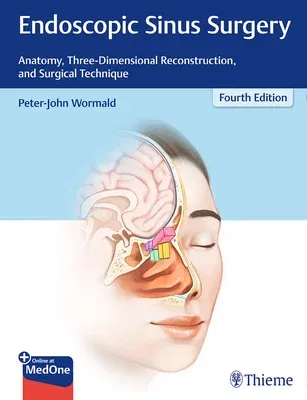The fully updated comprehensive anatomical guide on surgery of the
paranasal sinuses and skull base
As in the acclaimed prior editions, Endoscopic Sinus Surgery, Fourth
Edition focuses strictly on anatomy, 3D reconstruction, and step-by-step
surgical techniques. Written by Peter-John Wormald, the richly
illustrated text details anatomy and operative treatment of sinonasal
conditions such as nasal polyposis, chronic rhinosinusitis (CRS),
Samter's triad, eosinophilic mucus CRS, exophthalmos, acute orbital
hemorrhage, orbital subperiosteal abscess, and a wide array of tumors.
The fourth edition reflects simplified anatomical nomenclature published
in 2016 by Wormald et al, including reclassification of cells in the
frontal recess and the extent of surgery of frontal sinus surgery
(EFSS). This enables clearer understanding of impacted anatomy, most
notably the frontal sinus drainage pathways. New and revised
evidence-based procedures include the mega-antrostomy and pre-lacrimal
approach to the maxillary sinus and use of anterior based pedicled flaps
for frontal drillout. Refinements in other surgical techniques include
endoscopic medial maxillectomy and resection of sinonasal neoplasms.
- Anatomy and surgical approaches elucidated through 1,000 images
including CTs, illustrations, and diagrams
- Exquisite dissections by Rowan Valentine, who worked in the anatomy
laboratory of the late Albert L. Rhoton Jr., internationally renowned
author, educator, brain anatomist, and neurosurgeon
- Delineation of variations in frontal recess anatomy and difficult
regions adjacent to the sinuses provides important surgical guidance
- Seventy operative videos detail potential anatomical variations seen
in the frontal sinuses, ancillary procedures such as DCR, orbital
decompression, CSF leak closure, and skull base surgical approaches
This classic reference is a must-have for otolaryngologist-head and neck
surgeons, as well as residents and fellows seeking a robust tutorial on
the latest functional endoscopic sinus surgery (FESS) techniques. It
enables 3D understanding of diseased anatomy, associated surgical
treatment decision making, and safer surgery.

